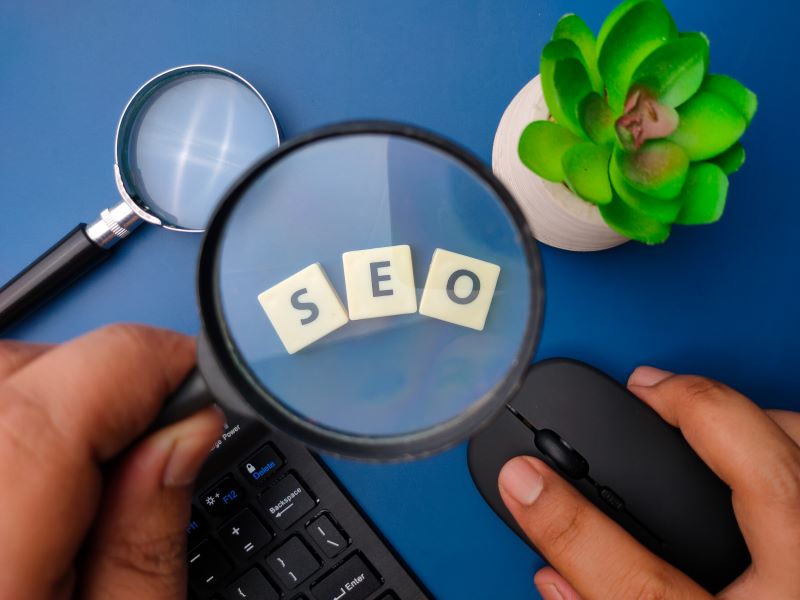
You’ve set up a website, created some content, and decided on an SEO strategy. Everything is going according to the plan — leads are increasing, and users are engaging. The results make you believe you’re headed in the right direction or even that your work is done. However, that rarely happens to be the case. SEO is a never-ending process that requires consistent and continuous effort. There are always growth potentials or adjustments you should explore to accommodate a rapidly evolving marketing landscape. That’s why we have found four reasons to better understand why SEO never ends.
Competitors Taking the Lead
SEO takes time and continuous effort to produce tangible results. You’ve defined the strategy and put it in motion. Although there’s a slight improvement in the rankings, you’re supposed to wait some time for the rest of the strategy to work its magic. Like other marketers, you start to doubt your strategy just because your efforts haven’t kicked in yet. You might even think about changing it entirely hoping it’ll bring you results right away.
Meanwhile, your competitors are on the move. They continue with the testing phases while patiently waiting for concrete results. Also, they find the time to monitor and analyze the results as they come in, allowing them to make appropriate adjustments. If you’re not taking any action, your competitors will use the opportunity to position themselves at the very top of the SERPs.
Various SEO Strategies
As you already know, there are various SEO types, such as on-page SEO, off-page SEO, technical SEO, and local SEO. If you want to make the most out of your marketing efforts, you should have an efficient strategy involving every type of SEO.
To create such a strategy, you first need to know what those types consist of. For example, on-page SEO is all about content structure and the optimizations of its parts. When your content is optimized, you need authoritative backlinks to boost the rankings. This is where off-page SEO plays a crucial role. Apart from content, you also need to optimize other website areas, such as its speed, responsiveness, and user-friendliness. The website’s visibility will also increase as you improve these technical aspects. You can optimize your website for local SEO in 4 steps for greater visibility and higher rankings for user queries in the nearby area.
Changing Search Intent
When optimizing your website, you need to know a few ranking factors, such as search intent. Search intent or user intent is why a user searches a specific query using a search engine. They’re usually looking for educational or informative content. Google’s algorithm aims to satisfy the user’s query by providing the best results in the SERPs. To select the most useful results, the algorithm relies on several factors, such as location, device, and history.
Most marketers believe search intent is set in stone. It costs them many great business and marketing opportunities they’re unaware of. Depending on your website’s rankings, you’re free to change search intent over time. For example, you’re running a seasonal business. The keywords you usually rank for put you at the top of the rankings throughout the season. Once the season is over, it drops because the content with its keywords doesn’t meet the user’s needs.
Evolving Algorithm
In the beginning, Google used to update its algorithms from time to time. Recently, marketers can’t cope with the number of updates introduced yearly. While most of them are almost unnoticeable, the search engine makes a few groundbreaking changes now and then. For example, when Penguin first appeared, many websites lost their rankings because their owners used too many keywords or resorted to questionable backlinking. Panda update filtered out high-quality content from low-value ones prioritizing user experience and quality.
The problem with these updates is that marketers usually prepare for the big changes and forget the slight ones impact on SEO too. The latest such update was introduced a month ago, in October 2022. It focuses on search spam and affects all the languages available. By keeping track of the latest algorithm changes, you’ll be able to fine-tune your strategy. This also means getting a much-needed advantage over your competitors.
Conclusion
Simply implementing an SEO strategy isn’t enough for it to bring lasting results. It takes close monitoring and adjusting as the circumstances change. Therefore, focus your attention on the strategy in place and work proactively to ensure the outcome surpasses your expectations.
You may also like: Digital Marketing Essentials for Business Success
Image source: Shutterstock.com



